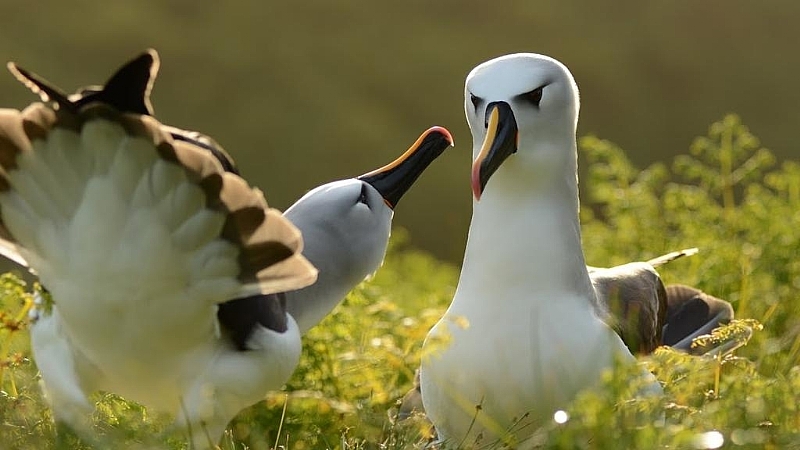
[ad_1]
Namibian conservationists and fishermen have reduced the number of accidental deaths of seabirds, including endangered albatrosses, from as many as 30,000 a year more than a decade ago, to just 215 last tally: and all this is due to the simplest of bird scarers.
The Namibian fishing fleet in search of hake and horse mackerel along its 1,500 kilometers of coastline was until recently considered one of the deadliest in the world for seabirds.
Normally, when fishing boats take out their baited nets and hooks, attract them or throw away fishing litter – they are a magnet to seabirds, many of which collide with cables coiled behind trawlers or get caught on them. the hooks of the longline. fishing boats.
But in 2015, Namibia passed new regulations that require all hake fishing vessels to use bird scaring lines, a kind of nautical scarecrow, and other measures to protect birds from deadly encounters with fishing gear.
The 98.4% reduction in seabird mortality between 2009 and 2018 is an “absolutely incredible achievement,” said Titus Shaanika, member of the Albatross Task Force (ATF) based in Walvis Bay.
The bird scaring lines consist of ropes decorated with colorful streamers attached to the stern of the ship. The benefits were most visible in the longline fishing fleet: boats that drag thousands of baited hooks on lines that stretch up to 30 kilometers.
“Our estimate suggests that 215 seabirds were killed in this fleet in 2018, up from 22,222 in 2009,” according to a new article co-authored by Shaanika and published this month in the journal Biological Conservation.
Apex predators
Shaanika, who works for the Namibia Nature Foundation, a conservation group that manages ATF’s work in Namibia, said the fishing industry has actively cooperated with its members since 2008, allowing them on their boats to collect data that was then used. to convince the government to adopt the new regulations.
“The fishing industry has played a key role in achieving these results,” Shaanika told RFI.
Among the seabirds that will benefit will be Namibia’s three main albatross species, the shy, black-browed and endangered albatross.
Albatrosses, which can live up to 60 years, reach sexual maturity late and raise only one chick during the breeding season. Scientists claim that the death of an individual bird has a major impact on population growth rates.
Fifteen of the world’s 22 species of albatross are threatened with extinction.
Shaanika said their conservation was essential, not just because “they are beautiful birds” that migrate great distances to breeding sites on remote islands in the South Atlantic.
Ecosystem health
As top predators, they help maintain healthy fish stocks and ultimately a strong fishing industry.
“By protecting albatrosses, we are ensuring that our ocean ecosystems are healthy,” he said.
The decline in the lethal impact on seabirds caused by Namibian trawlers, compared to longliners, was not as impressive: it had fallen to 1,452 seabirds in 2017 from 7,030 in 2009, according to the study by Conservation Biology.
The authors found that this was due to the fact that many trawlers did not deploy the bird scaring lines until after the nets were set, increasing the risk that seabirds would still collide with the unattended cables. protected.
Nevertheless, the results obtained so far by the new regulations are extremely positive.
Shaanika said that there is still a lot to be done to keep it that way.
“The work must continue,” he said.
Source link